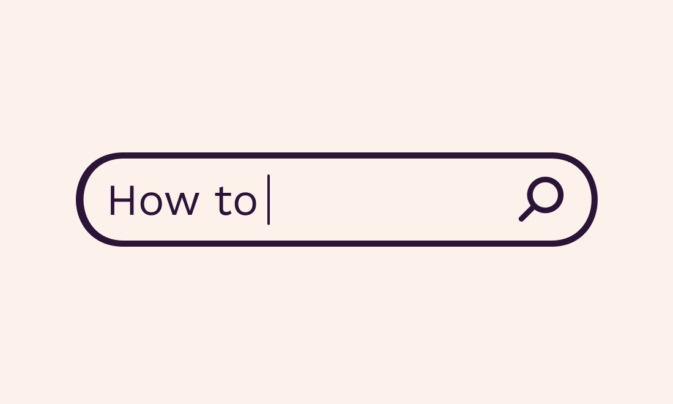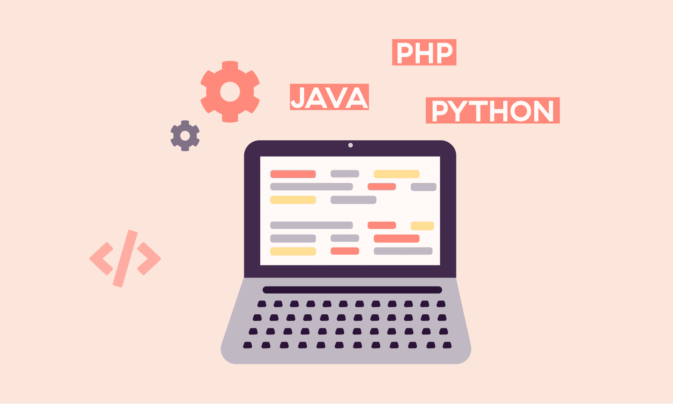If you set out to bake a cake, you first step is to check you have all the right ingredients at home. A similar principle works for hiring and upskilling employees — you need to know what’s available internally before making any changes.
To do this, you can use a skills matrix, a valuable tool for creating an overview of your organization’s current skills.
In this context, you can think of a skills matrix as the ingredient list for hiring managers looking to bake a recipe for business success. Not a fan of analogies? Don’t worry. We’ll walk you through what a skills matrix is, why you need one, and a step-by-step guide to create one.
TL;DR — Key Takeaways
A skills matrix is a hiring and talent management tool for assessing employees’ skill levels and interests in those skills.
A skills matrix uses a list of skills to identify skills gaps, enhance decision-making, manage resources more effectively, track employee development, and support workforce and succession planning to make better hires.
Skills matrix and competency matrix are two terms used interchangeably, but the latter is broader in terms of skills covered (skills are also slightly different from competencies).
To create a skills matrix, you only need to follow five steps: identifying missing skills, creating a scoring system, evaluating individual skills, evaluating interest levels, and creating a visual representation of your data.
Don’t have time to create a skills matrix from scratch We’ve included a handy skills matrix template below to get started!
What is a skills matrix?
A skills matrix is a tool hiring and talent management teams can use to assess their teams’ skills and competencies. It’s a visualization of the skills your team has, and their level of proficiency and interest in each skill.
Skills matrices do more than just help assess each employee’s skill levels, though. They also:
✅ Identify and close skills gaps causing low productivity and engagement levels
✅ Use a rating system to rank the proficiency in each skill across teams and employees to assign each team member to the correct department or job
✅ Improve succession planning, project management, resource allocation, training and development, and much more
Plus, they’re relatively easy to create and can be a powerful tool to guide your talent management and acquisition efforts — especially if you’re engaging in skills-based hiring.
7 benefits of using skills matrices
Whether you’re looking to upskill your existing team or engage in an aggressive talent acquisition campaign that requires you to hire employees with the most in-demand skills, skills matrices can be a useful tool for determining relevant skills for those roles.
Here are seven ways to use them to benefit your internal talent management or hiring efforts.

1. Identify skill gaps
A skills matrix determines which skills your existing team is missing by offering a data-driven approach to skills mapping. By laying out all the technical skills in a matrix, you can determine if your team has what it takes to meet and exceed their goals or if there is a skills shortage.
If your skills aren’t falling short now, they likely will be soon. Kornferry’s latest skills data highlights an $8.5 trillion talent shortage — more than 85 million jobs are expected to be unfilled by 2030 if employers don’t get ahead of the game by focusing on skills. Consider this your nudge.
But what does this look like in action? Imagine your development team needs to implement five new features in the next quarter. With a skills matrix, you’ll determine you’re missing a particular skill — customer feedback collection. With that knowledge, you can fill that gap by hiring a customer-focused product manager.
2. Effective resource management
After creating your matrix, you may realize your organization has all the skills needed to succeed, but they’re not distributed where you need them. If that’s the case, you have a skills mismatch in your team, and a skills matrix will give you the relevant data to prove it.
For example, you have a rockstar customer success manager who previously worked in sales. Instead of hiring new sales team members, you can ask this person to step in and teach your team a new tool or a process.
3. Track employee development
A skills matrix isn’t something you set and forget. As each employee grows and develops themselves in a role, you add specific skills to their matrix. If they’ve acquired new skills or upgraded the key skills they need for their role, jot it down in your matrix.
For example, 4 in 5 people are keen to learn more about how to use AI in their work. Once they’ve mastered Chat-GPT or taken a course in AI prompt engineering, update your matrix accordingly.
This makes it easy to track the impact of employee development in particular skills and determine which employees are more eager to grow in their roles. When the time comes to promote someone to a leadership role, a glance at your skill matrix will determine who has the core skills for the job.
4. Improve employee training programs
Once you introduce a new training program to bridge a skills gap, you’ll want to track its effectiveness. Compare your skills matrices in any team over time to see whether your training program is working or needs further modification.
A well-structured skills matrix also effectively tracks if your team has the most in-demand skills required to stay competitive in your industry. Add those in-demand skills to the matrix as they change (and they do…every year). For example, Coursera highlights the following skills most valued by employers in 2025:
- Generative AI
- Data analysis
- Software development
- User experience
- Web development
- Project management
- Account management
- Content creation and management
5. Enhance workforce planning efforts
Workforce planning involves a comprehensive analysis of skills, competencies, and resources your organization needs to achieve its goals — now and in the future. A skills matrix identifies your existing competencies to determine if they’re sufficient to reach your future goals.
Without thought-out workforce planning, you may find yourself in a situation where you have ambitious goals and not enough people (or the right people) to achieve those goals. Skills matrices help you prevent these mishaps, highlighting where to upskill and train existing employees or when it’s time to hire new ones.
6. Better succession planning
Succession planning is the process of identifying high-performance individuals on your team who will fill critical leadership and management roles in the future. It’s absolutely vital to an organization’s stability, yet 28% of large companies haven’t committed to this process.
A skills matrix complements your succession planning initiative by pinpointing which team members have a high proficiency in your most desired skills, and a commitment to developing specialist or leadership expertise. With a mix of self-assessment and testing methods like Toggl Hire, a skills matrix can identify high performers early on.
Over time, you can invest training and development resources in these employees to better prepare them for their future roles.
7. Hire better employees
Ultimately, a skills matrix determines which specific skills your team is missing to meet your business objectives in the future. With a skills matrix as a tool, you can refine your hiring process and create better job ads.
You won’t need to require all the skills for a particular role. Instead, your human resources department can focus on the skill level and type to fill your skills gaps and form a better team and company.
Skills matrix vs. competency matrix
The terms “skills matrix” and “competency matrix” are used interchangeably, often used in employee performance reviews and other assessment methods to measure employee capabilities. But honestly, depending on how an organization uses them, there may be some overlaps in the definition and use cases.
👉 A skills matrix focuses on the skills and abilities of individual employees in relation to a job role. It includes the soft and technical skills required to perform a certain job, as well as the interest level of each employee in each skill. Most of all, a skills matrix quantifies the proficiency in those skills, helping you identify skills gaps or “rank” employees.
👉 A competency matrix is broader and encompasses the skills, knowledge, and behavior necessary to perform well in the workplace. It covers a broader set of skills, such as cognitive, behavioral, and interpersonal skills. It measures the general competency level of an existing or potential employee, often showing the results on a scale.
You might also choose to use a skills matrix vs. a competency matrix in any one of the following situations.

Adapting to major industry changes
When a major industry change happens, a skills matrix determines what relevant skills your employees already have and which ones they need to adapt to those new changes.
For example, the recent rise in artificial intelligence tools such as ChatGPT turned the creative world upside down, and everyone with an OpenAI account suddenly became a writer. While we know that’s not actually the case, a skills matrix could have helped analyze internal skill sets to assess who might benefit from upskilling or even AI training.
That’s not to say that a competency matrix isn’t useful in this situation. You could use a competency matrix to determine the level of proficiency in AI skills, for example, or to assess if your employees have the broader skill sets necessary to adapt to a major industry transformation.
Implementing a new L&D program
When you invest in your employees, they tend to stay longer with you. And employers know this. LinkedIn’s Workplace Learning Report highlights that 90% of organizations are concerned about their employee retention rate and use learning opportunities as their top retention strategy.
A skills matrix can support both your retention and your L&D strategies by determining your training needs. In this context, a skills matrix would identify missing skills and highlight professional development opportunities.
When analyzing the skills matrix, you can choose the right type of learning and development program to fill the gaps you have. On the other hand, a competency matrix allows you to align the L&D and training programs with the broader competency requirements of your company.
Combining different teams
Let’s say you need to create a task force to launch a new feature. You’re going to need a blend of customer success, customer support, marketing, and sales teams.
With a skills matrix, you can take one quick glance at your available employees and determine the best people to join a new team and which tasks to assign them. You can even use the skills matrix to identify people with exceptional teamwork skills, or those who are potential team leaders.
A skill is a learned ability that ensures an employee (or candidate) can perform their job successfully. Developers, for example, need to have coding skills. A competency is the knowledge and, most importantly, the behaviors that lead that employee to be successful on the job.
In the case of a developer, they need to be competent in problem-solving and have strong analytical abilities. While these two terms are slightly different, it’s important to test for both when hiring or managing talent.
How to create a skills matrix in 5 steps
We’ve included a free skills matrix template below, but it helps to know how to create your own skills matrix from scratch so you know what you’re testing for and why. As you start to analyze your employees’ skills, follow these five steps to create an accurate overview of everybody’s skill sets.

1. Identify missing or essential skills
Skills are the key ingredient in every skills matrix, and you should choose them intentionally. Choose the skills in a matrix according to the:
- Overall business needs
- Departmental needs
- Specific role requirements
It ensures you assign equal importance to hard and soft skills. For some roles, soft skills are even more important than the technical ones. Additionally, group relevant skills together. For example, empathy, active listening, and confidence all belong to the broader communication skills category.
Start from the top and work your way down with your most important skills for the business, department, or role at the top of the matrix. If you’re struggling to identify them, talk to department managers and ask them to rank the skills according to the importance and the seniority of a position.
2. Create a skills matrix scoring system
You’ll need a grading or scoring system to assess your team’s skills accurately. Here’s an example you can use:
Beginner: Any employee with basic proficiency levels or the most general skills required to perform a job at a very basic or beginner level.
Professional: An employee with the skills required to perform well in a job, extensive experience, and the ability to guide more junior employees when needed.
Expert: An employee with all the desired skills to perform and exceed in a role and the capability to manage junior employees and improve team performance. They should also stay abreast of important industry trends and know how to communicate the product or service’s value to your customers.
Depending on the complexity of your skill matrix, your HR professionals can add different levels to the scoring system and make them more or less detailed.
3. Evaluate each employee’s skills
To create a skills matrix, you’ll need to define the strengths and weaknesses of each of your employees. There are many different ways to do that, and you can choose one that best suits your needs, time frames, and budget. For example:
- Software: Using skills assessment tools such as Toggl Hire
- Self-reporting: Asking employees to rate their skills on a certain scale
- Feedback: Gathering feedback from managers about the skill sets of individual employees
- Other: Getting certifications from third-party sources
You can use one or combine multiple ways to assess employees’ skills.
4. Evaluate employee interest levels
Assessing proficiency level is one thing; evaluating an employee’s interest in improving that skill is entirely different.
Let’s say you want to improve your marketing team’s skills in paid media. While this is a relevant skill for the business, employees may have no interest in learning it. This is what makes a skills matrix important and so useful. You can use it to identify employees with a passion for upskilling and receiving training for Google Ads, for example.
Evaluating interest is ultimately a valuable tool in guiding your employees’ learning and effective talent management. Managers can identify employees with the drive and interest to qualify for a promotion and give them ample opportunities for learning.
5. Create a visual representation of the data
The last step is creating your very own employee skills matrix — what it actually looks like, we mean. For most companies, this is an Excel spreadsheet with employees’ names, skills, and competencies, all ranked according to their level of proficiency and interest levels.
However you choose to design it, a quick glance at your skills management matrix should show you:
- If you have all the necessary skills in your team to take your business to the next level
- If someone is well-equipped to perform in a particular role
- What skills and competencies you’re missing to have more productive teams
🔥 The bottom line? A skills matrix benefits your entire company — not just key stakeholders and individual employees. When you do it the right way, it can show you whether you need to replace, upskill, or hire new team members.
Download our free skills matrix template
Our internal team of hiring experts worked hard to create this skills matrix template that you can copy and customize according to your needs. No skills matrix software needed — just download the template and supercharge your talent management and hiring processes!
⬇️ Click to download your copy (no email required!)

Close skills gaps with Toggl Hire
A skills matrix is a talent management and hiring tool that can identify skills gaps in your existing workforce and either guide you to reskill existing employees or hire new ones. However, to accurately assess your current (or potential) employees’ skill levels, you’ll need a few skills tests first.
Toggl Hire’s skills test library includes 150+ pre-made, customizable skills tests you can use to test for 180+ soft and hard skills. Use these tests alongside your skills matrix to identify and fill any gaps you discover.
The best part? It’s free to create an account and start creating skills assessment tests. Browse our test library to learn more about our available tests, or sign up today and get started for free!
Mile is a B2B content marketer specializing in HR, martech and data analytics. Ask him about thoughts on reducing hiring bias, the role of AI in modern recruitment, or how to immediately spot red flags in a job ad.






